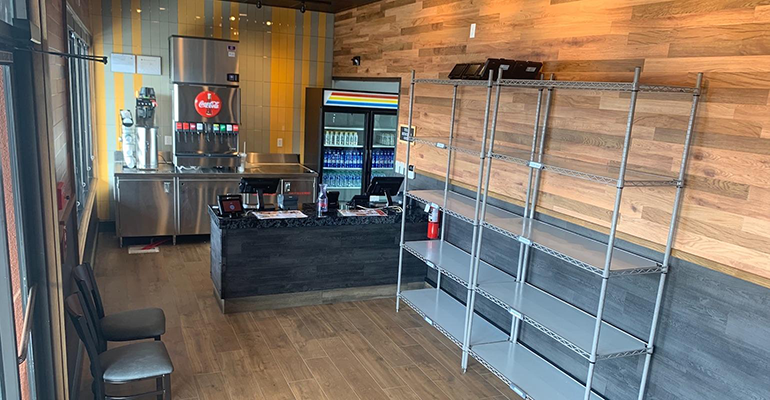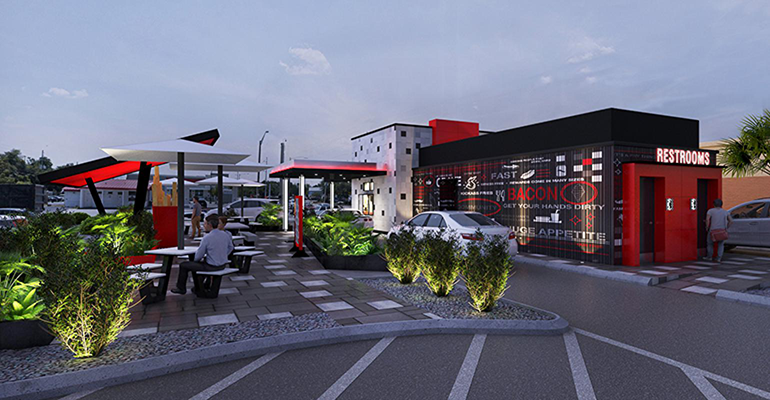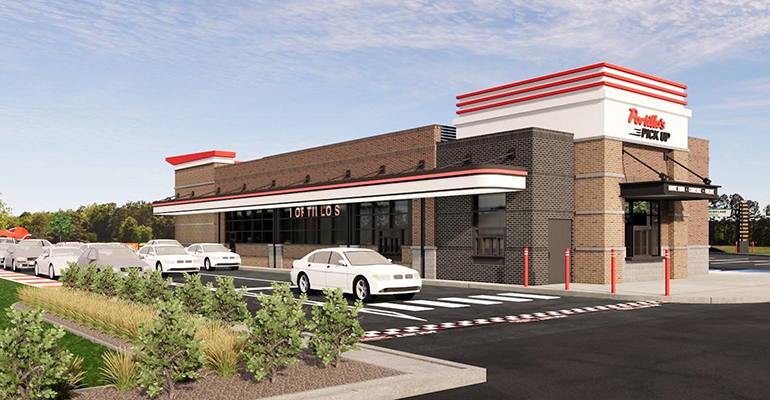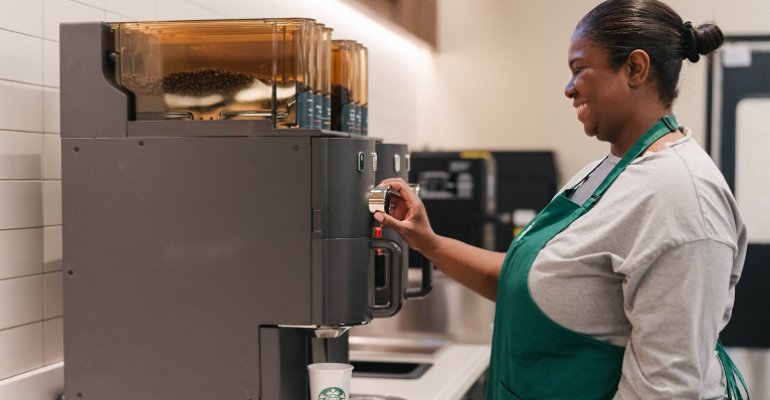It seems all anyone wants to talk about in the restaurant industry in 2023 is efficiency.
Indeed, based on an unofficial survey from Nation’s Restaurant News, “efficiency” was referenced about 25% more during the last round of earnings calls versus the same period in 2019 by restaurant companies that were public within that timeframe.
Of course, efficiency has always been a top priority for any business with an objective of making money. But the definition and approach have evolved in the past several years as the industry has faced unprecedented challenges and as technology has become more accessible. Essentially, efficiency is no longer just about cutting costs from the balance sheet. It now requires a multifaceted, deep dive look at every part of the business to ensure both time and money are optimized.
That means operational efficiencies through simplified and streamlined menus, labor efficiencies through scheduling technology, back-of-house efficiencies through new equipment and kitchen display systems. It’s front-of-house efficiencies through pickup cubbies, organizational efficiencies through restructuring efforts, and it’s a totally new way of thinking about the brick-and-mortar format, from square footage to kitchen flow.

When Kevin Hochman was named CEO of Chili’s Grill & Bar parent company last year, one of his first lines of business was to reduce complexity to grow the core business.
Brinker International has become a case study in this holistic approach toward efficiency. When Kevin Hochman was named CEO of Chili’s Grill & Bar parent company last year, one of his first lines of business was to reduce complexity to grow the core business. This multiyear simplification strategy includes everything from enhancing equipment to streamlining the menu. The company has so far put a robotic server test on hold, eliminated shrimp portioning during prep time and removed fry baskets.
Brinker is also testing new energy-efficient and faster-cooking equipment, improving its to-go technology to reduce friction, reassessing its “pay-at-the-table” technology, improving handheld technology for guests to order directly from the table, and embracing virtual learning to remove some tasks from operators’ plates.
“We’re hyper-focused on making it easier and simpler to run our restaurants,” Hochman said.
This simplification strategy includes four pillars — team members, food and drink, hospitality and atmosphere — and each pillar has a senior executive owner, as well as action plans and KPIs.
“Over time, we know these efforts will reduce waste, improve labor productivity, increase margins and improve retention,” Hochman said.
Examining every facet of the business
Such improvements have been yielded elsewhere from similar efforts in this so-called “year of efficiency.” For Chipotle, that means a sharpened focus on operations led by its Project Square One strategy launched last year. This focus includes ensuring proper staff on both makelines to achieve more speed and accuracy. During the company’s most recent quarter, Chipotle reported sales, margin and traffic improvements driven largely by this back-to-basics strategy.
“All these things are driving toward hopefully better guest experiences, but also a better work environment for employees,” CEO Brian Niccol said during the earnings call in late April. “And then, obviously, I think it will be more efficient.”
Chipotle is also turning to equipment to achieve more efficiencies, adding a new grill that cooks chicken about 10 minutes faster, according to Niccol. The company is also piloting Chippy, an automated system to cook its tortilla chips.
First Watch is another example, investing in double dishwashers and wider grills that allow for more pancakes or sandwiches to cook at the same time. Freddy’s Frozen Custard and Steakburgers developed its own proprietary grill that clamps down and presses its burgers automatically, taking this tactic off team members’ to-do list while improving throughput. CEO Chris Dull said this one change reduces cooking time by up to 40 seconds. The company has also adopted a pictogram system, which shows employees what is on a customer’s burger through pictures on a device (versus them having to read a ticket) and has added a designated bagging area.
“It’s a simple process and we try to keep it simple. We have been innovating in our kitchens to de-skill what is difficult, and we really had to make those changes during Covid when our business model flip-flopped to mostly drive-thru. That gave us an opportunity to really execute faster and made the entire experience better,” Dull said. “We are packing a lot of volume in a relatively short window of operation and we’re doing so efficiently.”
Starbucks is also embracing equipment innovation to achieve more efficiency. Last year, the company introduced new brewing equipment backed by a $450 million investment. The “siren system,” as it’s called, trims the time it takes to make a Frappuccino from almost a minute and a half to just over 30 seconds.
Beyond equipment, several chains are examining how to optimize their kitchen flow in general. Take Checkers/Rally’s as an example. The company tapped an outside firm to launch a motion study through a “fake kitchen” and concluded that team members were walking one full mile more than they should be during a shift.
“That’s obviously a lot and not very efficient, so we reconfigured our kitchens to take some pressure off the fry station in particular, which set us up for success. That person on fries is freed up a little and it’s just made things easier on them,” said Kris McDonald, VP of Development.
The company is preparing to conduct a similar study again to continue making such improvements and ease some labor pressures.

Checkers/Rally’s tapped an outside firm to launch a motion study through a “fake kitchen” and concluded team members were walking one full mile more than they should be during a shift.
Portillo’s, meanwhile, is undergoing a “Kitchen 23” initiative. It’s reduced back-of-house walking by 18 linear feet, which adds up throughout the day.
“That’s a big opportunity for us — consolidating the kitchen line so team members take fewer steps, giving them more time to make food or interact with guests,” said Garrett Kern, vice president of strategy and culinary.
The company is also looking at simplifying other kitchen tasks. Restaurants used to prep 27 different items in the morning and now prep less than a dozen after sourcing pre-cut ingredients from its vendors, for instance. Team members also used to ladle salad dressing from gallon containers into smaller portion cups and then put the lids on. The company has since found a company that does this task at scale, giving its team members more time to improve the guest experience in other ways, Kern said.
“Portillo’s differentiator is the experience — there’s a bit of theater in how we interact with our guests. So we looked at tasks that were repetitive and disengaging for our team members, and tried to eliminate those, so our teams can instead take an extra few minutes to make the perfect beef sandwich or interact with a guest,” Kern said.

Portillo's has reduced back-of-house walking by 18 linear feet, which adds up throughout the day.
Tapping vendors to simplify back-of-house work seems to have picked up, with companies from Wendy’s to Honeygrow also taking this route. Wendy’s recently shifted its salad prep tasks from in-store to suppliers, for instance, while Honeygrow switched from fresh to canned pineapple.
“We sell a lot of pineapples in our stir fry, so we were buying pineapples and hacking them and it’s labor intensive, it’s inconsistent, the yield is variable based on how well you know how to cut a pineapple,” Honeygrow founder and CEO Justin Rosenberg said during the April edition of Nation’s Restaurant News’ Emerging Restaurateur Live Learning Series. “Our GM asked why we were doing this. We tested canned pineapple and everyone preferred it. We adopted canned and reduced costs by $320,000 annually. It was a really simple thing we could do to be more efficient.”
Of course, all of these efforts yield more labor efficiency. Sometimes, however, that efficiency comes from the implementation of the right technology, like a kitchen display system or labor scheduling app. For Ruth’s Chris, such labor efficiency came from its recent development of a proprietary demand forecasting platform, which executives say has resulted in a 10% improvement in hours per entrée.
From the kitchen layout to SKUs to the back-of-house simplification and labor optimization, restaurant companies are itemizing every facet of their businesses to achieve that goal of efficiency. And yes, that goal has become more critical than ever as operators continue to grapple with labor shortages and inflation while essentially balancing two businesses: on-site and off-premises.
How the idea of efficiency has evolved
With these challenges in mind, the definition of efficiency has effectively changed since the onset of the pandemic in 2020. For Portillo’s, that means a different approach to KPI measurement.
“In this environment, it’s hard to judge efficiency based on the traditional metric of sales per labor hour. It often doesn’t give you an accurate measure, so brands have had to think about different ways to express productivity,” Kern said. “The definition of efficiency has expanded, in part because guests are more convenience-oriented than ever before. How do you make guests who have deliberately chosen to order ahead, skip a line, etc., feel rewarded for this choice? From the employer perspective, how do you create a better experience for team members while finding the right give and take of efficiency?”
Caroline Skinner, COO at Tupelo Honey, also believes the idea of efficiency has “absolutely” changed because of the pandemic and its impact on restaurant staffing.
“We’ve become smarter because of a lot of the things we learned about through the pandemic — our buildings, kitchens, products, how we get things off the line faster and into more channels and reduce ticket times,” she said.
Skinner adds that becoming wiser has been a necessity as restaurants juggle more channels and traffic with less staff.
“We got smarter as an industry because we had to. There was an evolution of how this industry has shifted its orientation toward the employee,” Skinner said. “Efficiency has to do with operators getting smarter by leveraging tech and tools to expand the reach of what we can do, but also recognizing we can’t continue to treat employees the way we have for so long.”
In other words, the idea of efficiency has changed because there are more balls in the air and less people to juggle them. But it has also changed because it’s simply more expensive to run a business now. Inflation remains high, interest rates have ticked up, wages have reached a point of no return. Corners may be trimmed, but it is critical that consumers’ and, now more than ever, employees’ experiences aren’t compromised in the endeavor.
“Industrywide, margins are being squeezed because of food costs and the availability of labor. At the same time, good brands are always looking for ways to improve the guest or team member experience,” Kern said. “So, the conversations about efficiency are happening because people want to protect these experiences while making business-smart decisions.”
Improving guest and team member experiences is the north star of Brinker’s efficiency efforts. In fact, Hochman said many of the ideas the company is executing, including the elimination of shrimp portioning, have come from team members. That said, with all these initiatives underway, Hochman notes it’s important to not cut so much as to compromise the brand’s culture.
“Building and maintaining our culture is sacred,” he said. “And we will continue to invest in it.”
Contact Alicia Kelso at [email protected]

